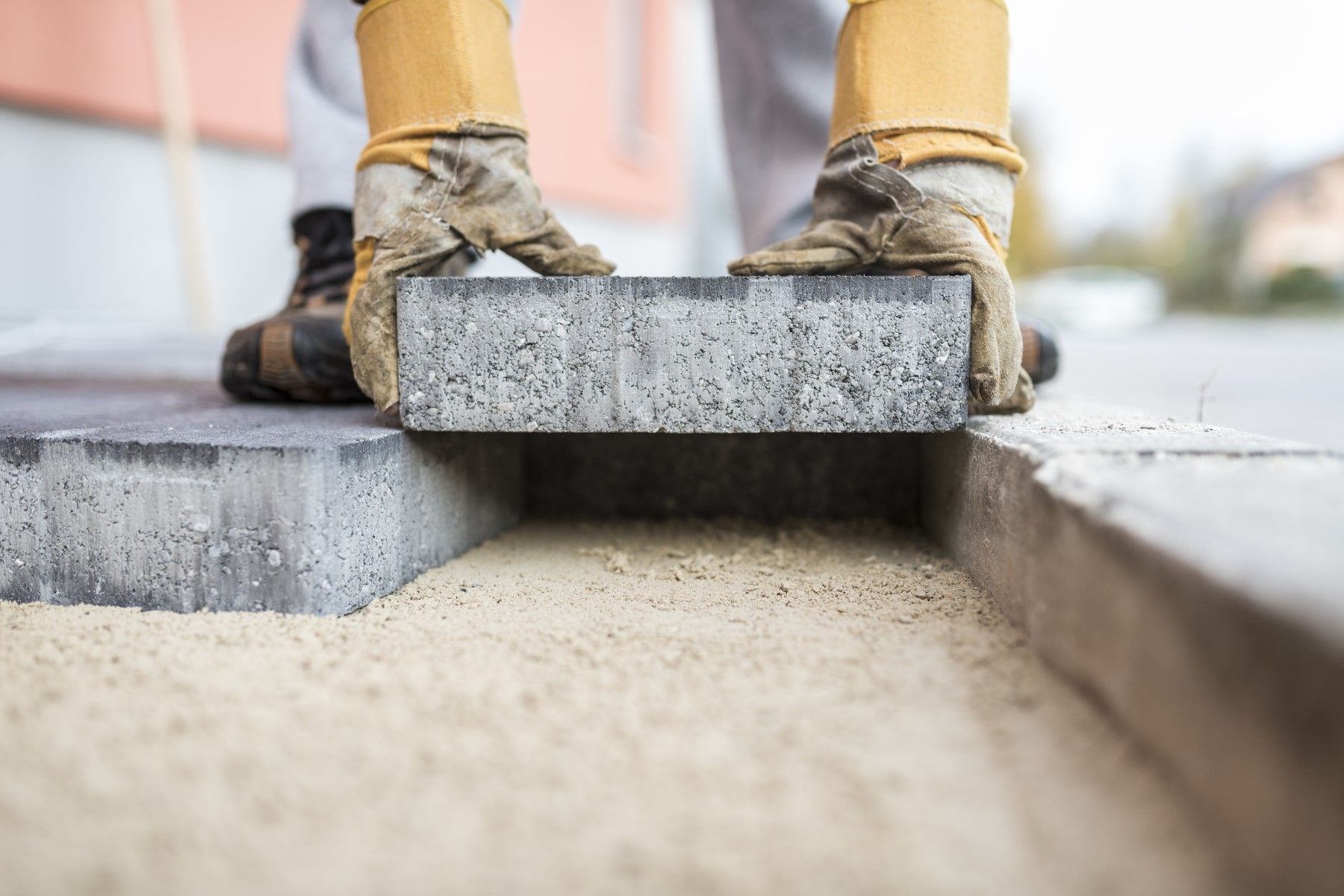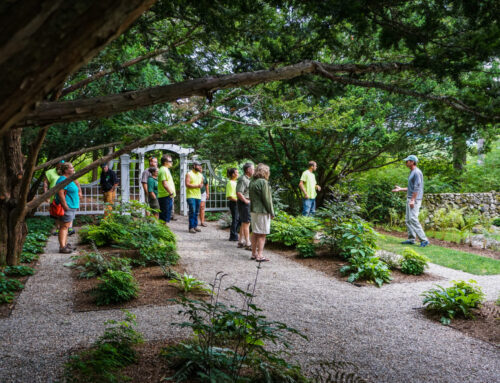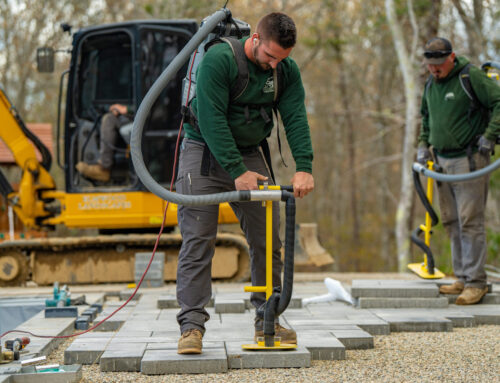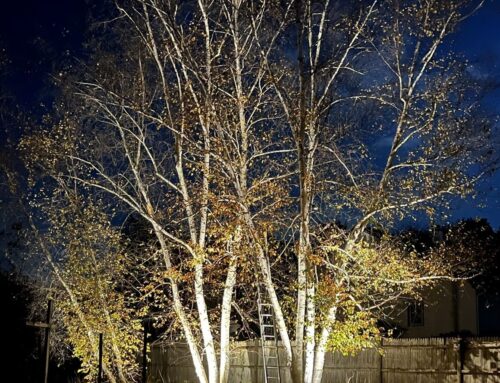Slab Mania

Technically, what is a slab? According to ICPI [ICPI Concrete Paver Installer Course book, 8th Edition, pg. 90], “slabs generally have an aspect ratio greater than 4:1, a minimum thickness of 2″ and a size larger than 10″ x 10″.” As contractors we must remember that paving slabs perform differently than regular pavers.
The aspect ratio is extremely important in selecting the right paver/slab for your job. Aspect ratio measures the unit length to its thickness. When this ratio exceeds 4:1 the units generally cannot be used for vehicular applications. I have seen projects where contractors used slabs that were a combination of 6″ x 12″, 12″ x 12″, and 12″ x 18″ x 2 3/8″ thick, and observed how many of the pieces’ cracked during compaction in to the bedding sand, or cracked from the loads they were required to carry. When I teach the NCMA Level 1 Certification class I say repeatedly that you don’t want to ask the wall block that you are using to do something it was not designed to do. The same can now be said about paving slabs. Don’t install them in applications where the loads are too great for the product.
ICPI is currently performing tests on slabs and working with manufacturers to help establish industry specifications for slabs. As of right now, manufacturers have few specifications to meet on the manufacturing end. With pavers, manufacturers must meet specific psi tolerances, water absorption rates, and material deterioration specifications. Slabs do not have any of these specifications to meet at this time.
When installed correctly, paving slabs offer an opportunity for increased production rates. We do all of our slab installation with our Pave Mor suction tools. The tools not only speed up production but save knees, backs, and fingers. We use the one-man tool for smaller slabs 50lbs and under, and the two-man tool for larger slabs. Our patio production rate is about 275sqft per hour for three men. The important thing is that that rate stays the same all day, day after day, because we are not fatiguing ourselves by installing by hand. Most of my patios average about 500sqft. My two-man prep crew will take about 5 hours to excavate, infill, compact, and level a 500sqft area. Then the install crew will take about 45 minutes to level screed pipes, and install our bedding sand. I estimate two hours of laying pavers, one to two hours of cutting depending upon the curves, circle packs, etc., one hour to install edge restraint and sweep in the polysand, and one hour of loaming and seeding the disturbed areas. Including travel time, set up, and clean up, I estimate about 40 man hours on a 500sqft slab patio install. For the same size patio installing Hollandstone pavers I would figure 46 man hours.
Using slabs, the embedment compaction process can be tricky. Many manufacturers say not to use a vibratory plate compactor when embedding slabs in to the bedding sand. We use the Weber VPR700 Roller Compactor to do all of our embedment of slabs and pavers. There are no worries about cracking, scuffing, or chipping the slabs when using this roller compactor. It is also extremely important to vibrate the polysand in to the joints of the slabs. Phil Graves, Techniseal’s Director of U.S. Sales, told me that “studies have shown that with compaction on the surface of pavers and slabs you get 12% more sand in to the joint. This not only helps with vertical interlock, but also results in a 20% increase in the strength of the polysand.” This is important for the long term viability of the system; that all components be as strong as possible.
Be diligent in your paver slab selection process, install efficiently, use the proper tools, install all the components that make our system strong and long lasting. As Phil Graves says, “the customer wants the best finished result possible. Using the best materials, tools, and processes is the easiest way to guarantee the best finished product and safeguard against costly call backs. It’s a very easy recipe for successful installation.”
— by Bill Gardocki, past president of NHLA (1994 & 1995), now a hardscape educator. This article is reprinted with permission from Hardscape Magazine



